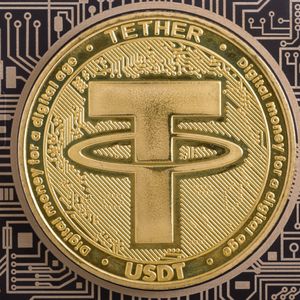According to Ki Young Ju, dark stablecoins offer a solution to the regulated future that governments envision for stablecoins. They differ from regular stablecoins because they are designed to prioritize privacy, decentralization, and resistance to censorship. Stablecoins backed by fiat or assets like US treasuries were the answer to issues in the cryptocurrency ecosystem, primarily linked to volatility, usability, and bridging traditional finance with crypto. The concept of “dark stablecoins” is now being discussed in relation to the future of cryptocurrencies, particularly as politics continues to clash and integrate with the cryptocurrency ecosystem. Some “dark stablecoins” are already in the top 10 in terms of stablecoin supply. Source: Coinmarketcap Crypto degens may prefer dark stablecoins to mainstream alternatives Traditional stablecoins like USDT or USDC are often tied to fiat reserves and subject to regulatory oversight. On the other hand, a dark stablecoin could enable any interested party to operate without centralized control or intermediaries. They would essentially be uncensorable, decentralized, and will not need middlemen. Above all, they will not be fiat-backed. One method Ju proposed was pegging to existing stablecoins via decentralized oracles like Chainlink. As Ki Young Ju stated , the concept of dark stablecoins is mostly hypothetical. However, while netizens are looking forward to new ones being created, there may already be existing stablecoins that could be classified as dark stablecoins based on their characteristics. One example is DAI, an Ethereum-based, crypto-collateralized stablecoin soft-pegged to the USD and governed by MakerDAO. It fits the bill because it does not use existing stablecoins to maintain its peg, but rather, over-collateralized crypto assets like ETH, WBTC and smart contracts. As things stand, no single entity has the ability to freeze DAI because it is managed by smart contracts and also, crypto collateral like ETH is harder to seize than fiat reserves. Another good candidate for the “dark stablecoin” title is USDe, a synthetic, yield-bearing stablecoin on Ethereum, backed by a delta-neutral strategy (ETH long positions hedged with shorts). It also aims for decentralization and censorship resistance through crypto-based stability. However, a centralized exchange reliance and complexity make it less fit for the role. The concept of dark stablecoins is gaining attention Some governments have been tightening control over cryptocurrencies, particularly stablecoins because they act as bridges between crypto and fiat systems. Europe, for example, has implemented stricter regulations on stablecoin access through its MiCA regulation, and the U.S. is steadily increasing oversight of USD-pegged stablecoins through legislation such as the GENIUS Act. Stablecoins like USDC are now regarded as potential “choke points” for regulators who monitor or restrict crypto transactions, as they often comply with Know Your Customer (KYC) and Anti-Money Laundering (AML) requirements. In essence, central bank digital currencies (CBDCs) and regulated stablecoins are avenues for governments to enforce taxation and surveillance. This defeats the whole purpose of decentralization in crypto, and users with foresight are already looking ahead for alternatives. The cypherpunk ethos behind Bitcoin also prioritizes censorship resistance and financial sovereignty. As stablecoins become more regulated, users may opt for privacy-focused alternatives to preserve the original ethos. Dark stablecoins could become an escape route for users who want to avoid what Ki Young Ju called “built-in tax collectors” or centralized control linked to traditional stablecoins. Suggestions for dark stablecoin issuers Young Ju also suggested two possible ways a dark stablecoin may be created. One is through advances in blockchain technology, such as decentralized oracles like Chainlink and privacy-focused protocols. Another way is through stablecoins issued by countries that don’t censor financial transactions. In the event that one does materialize, it would most likely be met with more legal challenges than acceptance. A good example was the Diem stablecoin, a product that arrived too early, which crumbled under the weight of challenges from lawmakers worried about its effect on the traditional banks. It is also possible that the decentralization and privacy features could attract scrutiny for potential use in illicit activities, similar to concerns raised about privacy-oriented coins like Monero. Cryptopolitan Academy: Want to grow your money in 2025? Learn how to do it with DeFi in our upcoming webclass. Save Your Spot


















